1000 Words: Visual Defiance Against the Authoritarian State
Since Charlie Kirk’s assassination, the crackdown on dissent has jolted photojournalism, street art, and illustration—each surging now to galvanize truth, disrupt complacency, and bear witness.
On September 10th, a gunman assassinated Charlie Kirk. By afternoon, the same news cycle that had consumed hours dissecting his death barely paused when gunfire erupted at Evergreen High School. One death commanded the spotlight; the others faded into the now-routine category of school shooting. The disparity revealed something stark: which lives get seen, which violence gets named, depends entirely on who’s watching and what they’re allowed to see.
This context defines the images collected here. They are not just records—they are acts of witness in a society where threats, censorship, and reprisal have become routine. After Kirk’s death, the apparatus of suppression accelerated. Individuals were silenced. Newsrooms toed the line. The images that follow document what happens when traditional channels of dissent close down: visual defiance steps into the void. Unlike voices that can be threatened off the air or pressured into false balance, these images speak through bodies, walls, and blank spaces—testimony that persists when words become too dangerous.
I. Bodies as Battlegrounds
Badges and Badges
Photographer Sinna Nasseri captured this photo at Charlie Kirk’s Turning Point USA conference in Tampa in July. The subject: a young woman in immigration detention, photographed from behind at an event celebrating the very enforcement policies that detained her. Only the back of her head is visible.
She’s literally sticking her neck out—the most vulnerable target bearing the most defiant message: “FUCK YOU, I WON’T DO WHAT YOU TELL ME. When speech brings consequences, the neck becomes both a billboard and a bull’s-eye. Rage Against the Machine’s lyrics are etched into the flesh, leaving the body as a permanent testament.
Punishing Policy, Viral Remix
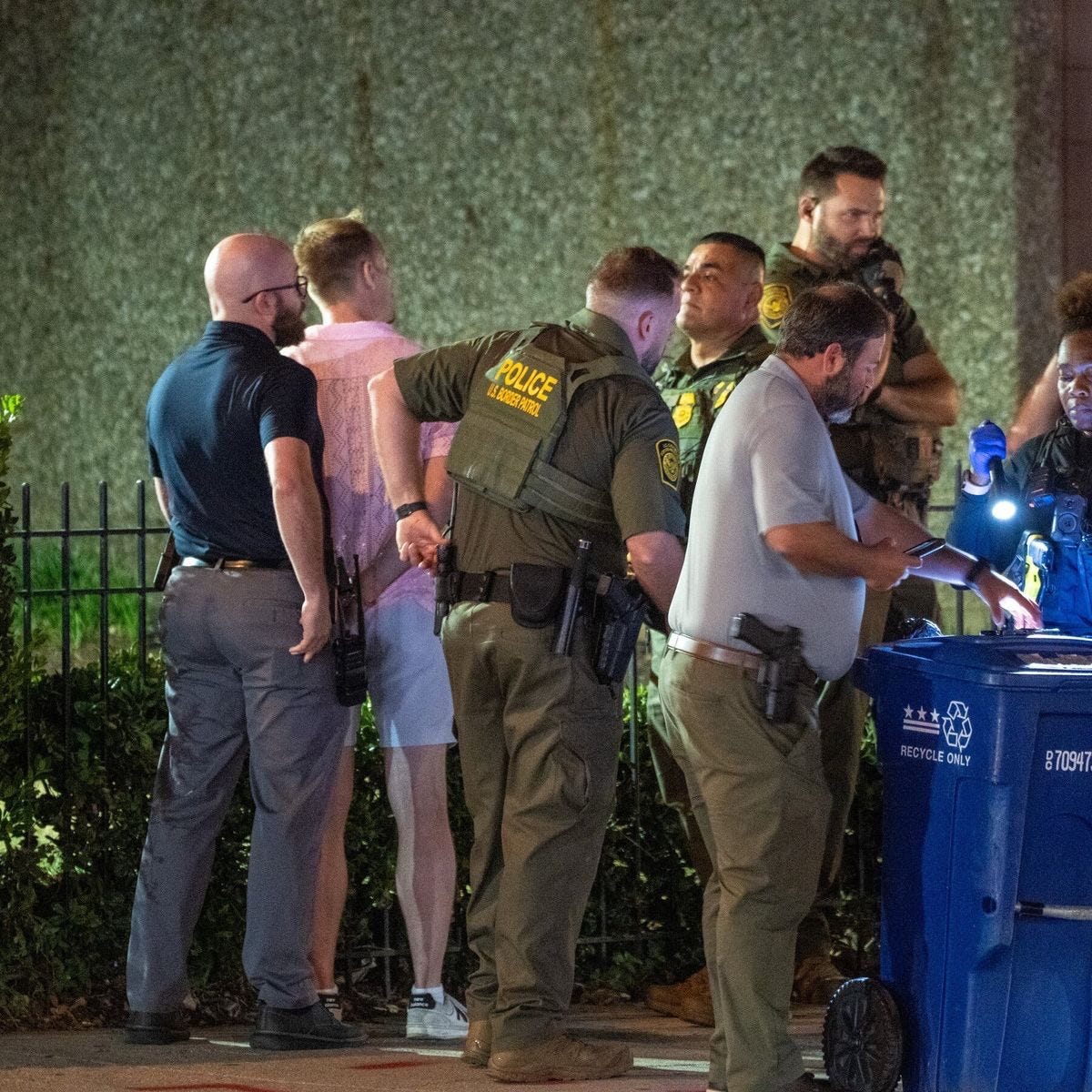
A protester detained for a sandwich toss—absurdity and overreaction in perfect balance. The arrest crystallizes how minor resistance draws major response, turning lunch into civil disobedience.
Then the image becomes local legend—comic, angry, persistent. When arrest photos become street art, the state’s attempt at intimidation backfires into folk heroism.
II. Institutional Suppression
Fire Away
RFK arrived at his latest Senate hearing itching for war—not just to pay lip service, but to deliver a full assault on the institutions meant to protect public health.
Photographer Andrew Harnik’s response couldn’t have been more insightful: he shoots Kennedy’s hostile Senate performance not by centering on Kennedy himself, but by foregrounding the wall of photographers documenting him. In a stroke of novelty, he captures his fellow photographers as RFK’s proxies—their cameras, one like a shoulder-fired weapon, flipped in the direction of scientific institutions, the process of congressional oversight, and every one of us.
Here sits a man who trafficked in vaccine conspiracy theories, now positioned to gut the agencies that stand between Americans and the next pandemic. The photographic arsenal mirrors the real one: Kennedy wielding his platform to demolish decades of scientific consensus, while the photo frames democracy’s immune system failing in real time.
Muscle Bound
He stands alone but owns all the space—waiting outside asylum hearings to haul the next immigrant into detention. Trump’s agenda has made intimidation policy: the Pentagon was renamed the “Department of War,” and enforcement agencies have been flooded with funds. His head an afterthought, the agent’s bulk dwarfs everything else—making sheer muscle the signature of governance.
Fish Out of Water
Trump’s war on majority-Black cities plays out in miniature here: red state troops sent to intimidate blue city residents and purge immigrants. While the media amplifies Trump’s rhetoric about “dangerous” urban areas as “training grounds,” they miss the Civil War echoes.
Not so with this subtle but clever photo by Reuters photographer Jose Luis Gonzalez, who captures mostly white South Carolina guardsmen wedged into a DC subway car, looking like fish out of water. They cluster like a human choke point, turning everyday transit into a reminder of federal overreach. Their tan uniforms, accidentally camouflaged against the beige interior, add an absurd visual irony—they blend into the décor even as they stick out politically.
Lost in a Daze
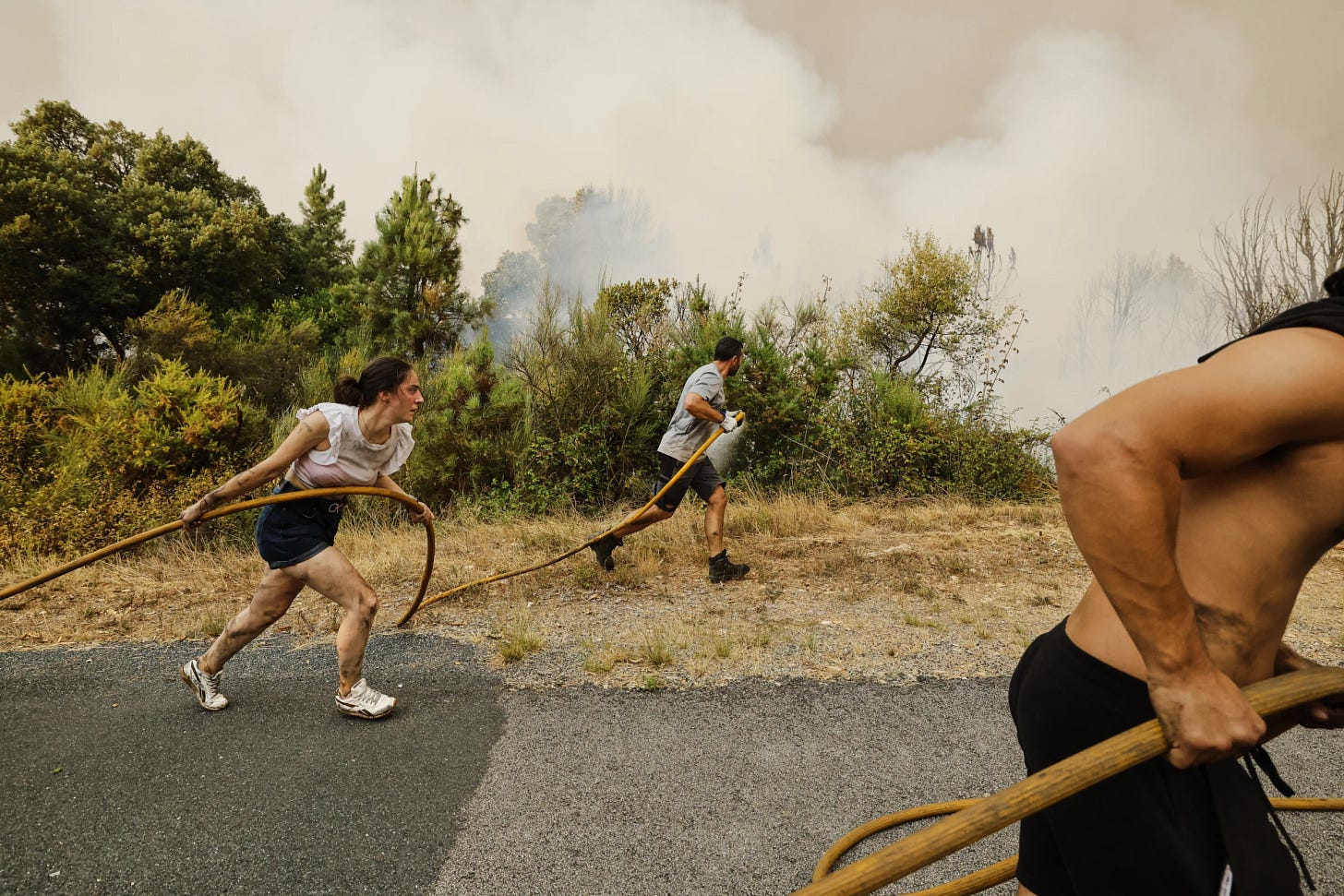
Motion blur tells two stories. In Portland, federal agents surge toward protesters—bodies transformed into an advancing wall, the state bearing down with overwhelming force.
In Spain, citizens rush toward a wildfire with garden hoses, desperately improvising what should be a coordinated response. The same visual language—motion, urgency, chaos—but one captures massive federal resources deployed against protesters who pose no threat. At the same time, the other shows ordinary people left to fight a real catastrophe alone.
Morning Shockwaves, Afternoon Silence
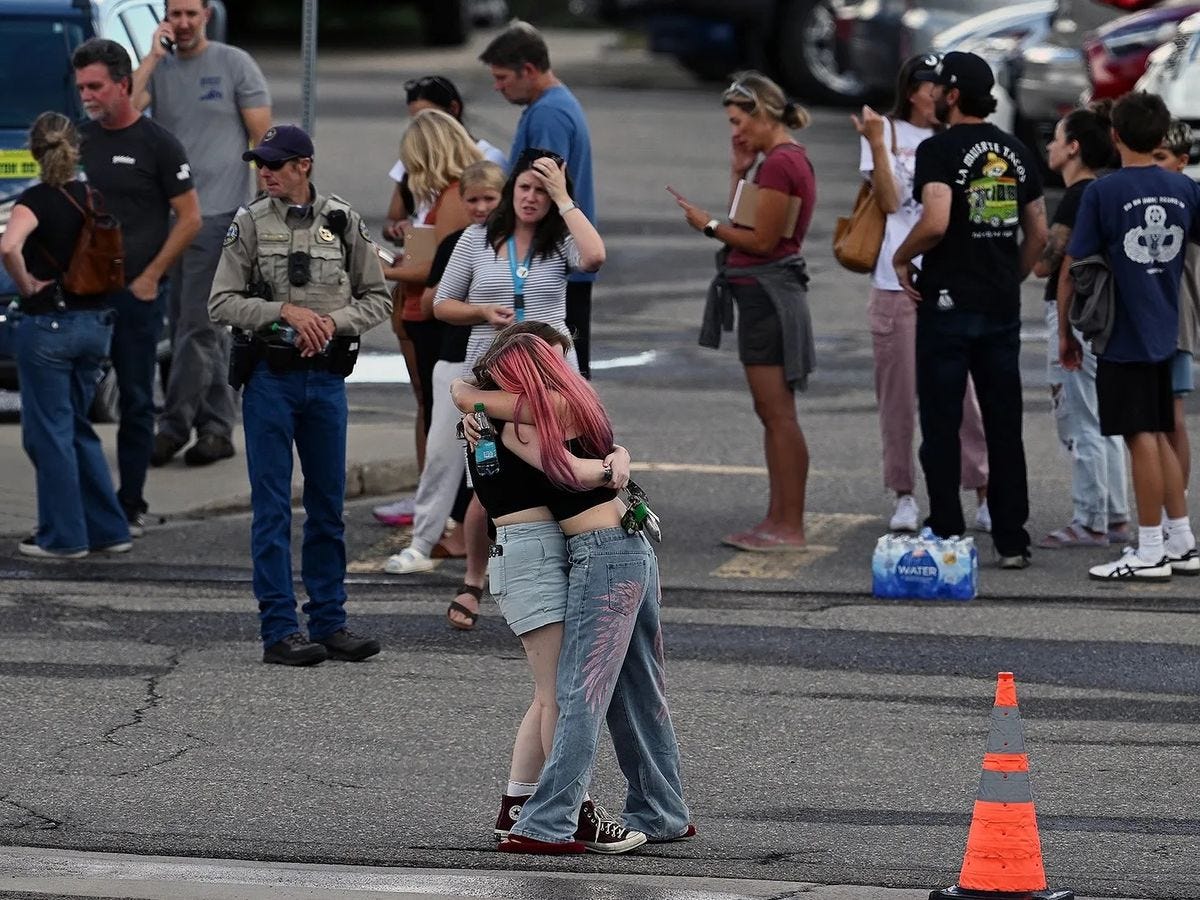
September 10, 2025. Panic settles over the crowd, phones are out, and kids are holding each other. You might expect this to be coverage of Charlie Kirk’s assassination—the composition has that weight, the shock, the choreography of American tragedy. But this isn’t the Kirk shooting. It’s Evergreen High, hours later. Some violence commands spotlights; other violence fades almost unseen, though the tears run the same.
III. Media and Artistic Resistance
War on Free Speech, Public Art
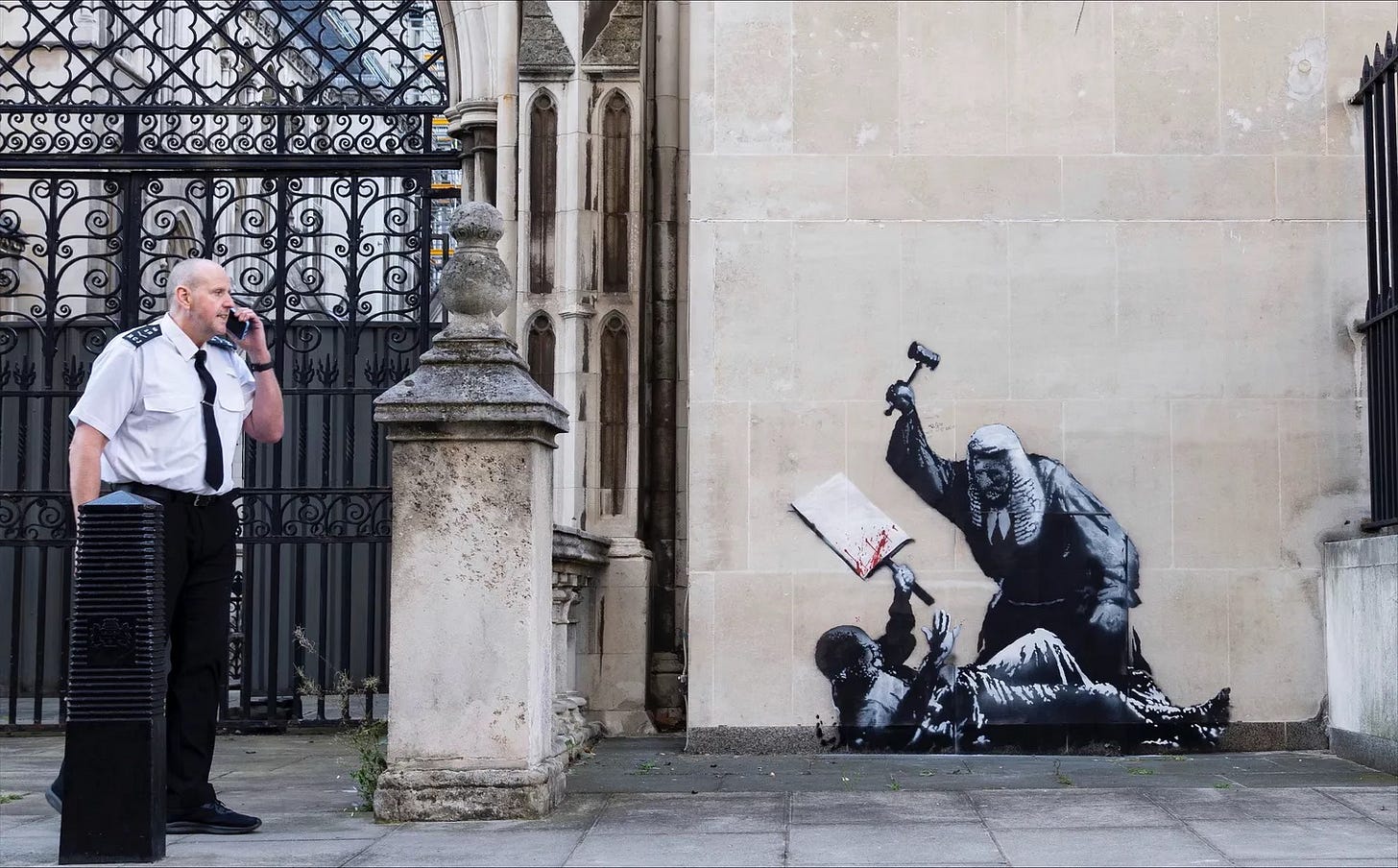
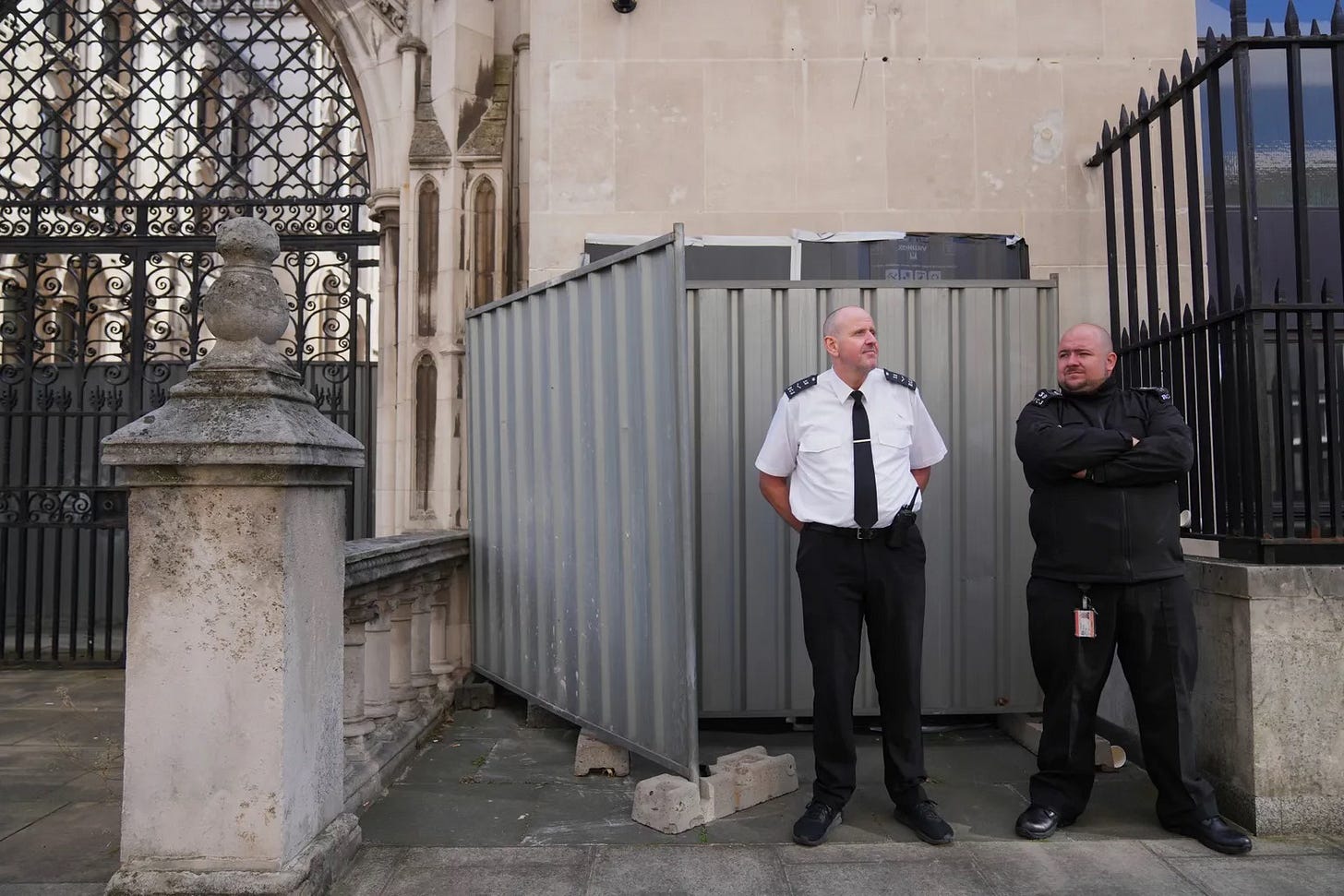
Banksy’s new mural appears outside the Royal Courts of Justice—a judge in wigs and robes beating a protester bloody. Hours after authorities labeled Palestine Action as terrorists, here’s justice reimagined as a weapon. Then comes the cover-up. Guards block the mural, making the absence the loudest statement of all. What’s on display now isn’t just the crackdown on protest, but anxiety about what an image might ignite. The void left behind shouts as loud as the art.
When Atrocities Go Unnamed
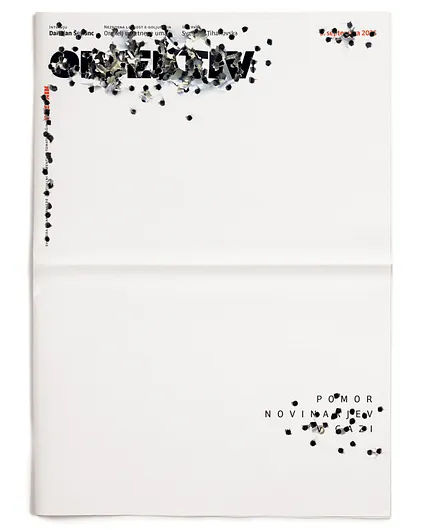
This Objektiv cover was Tomato Košir’s radical answer to the unprecedented slaughter of journalists in Gaza (over 220 killed since Israel’s war began). Where publications signal grief with black covers, Košir wanted something angrier—a page punctured like the bodies of reporters on the ground.
No Photo
NO-PHOTO 2025, a guerrilla intervention at the Rencontres d’Arles photography festival, pasted black squares with photo credits throughout the city. Each displayed a text description.
The project inserted the decimation of Gaza into the festival and commented on its absence. Yet in that absence, an exquisite visual language calls forth the unseen. In the vacuum, the mind’s eye rushes in: detail sharpened, meaning unfiltered by habit or fatigue. These blank spaces allow narrative and testimony to bypass our familiar perceptual filters, making the unseen vividly present—arguably even more powerfully than any raw image could.
Remote Control
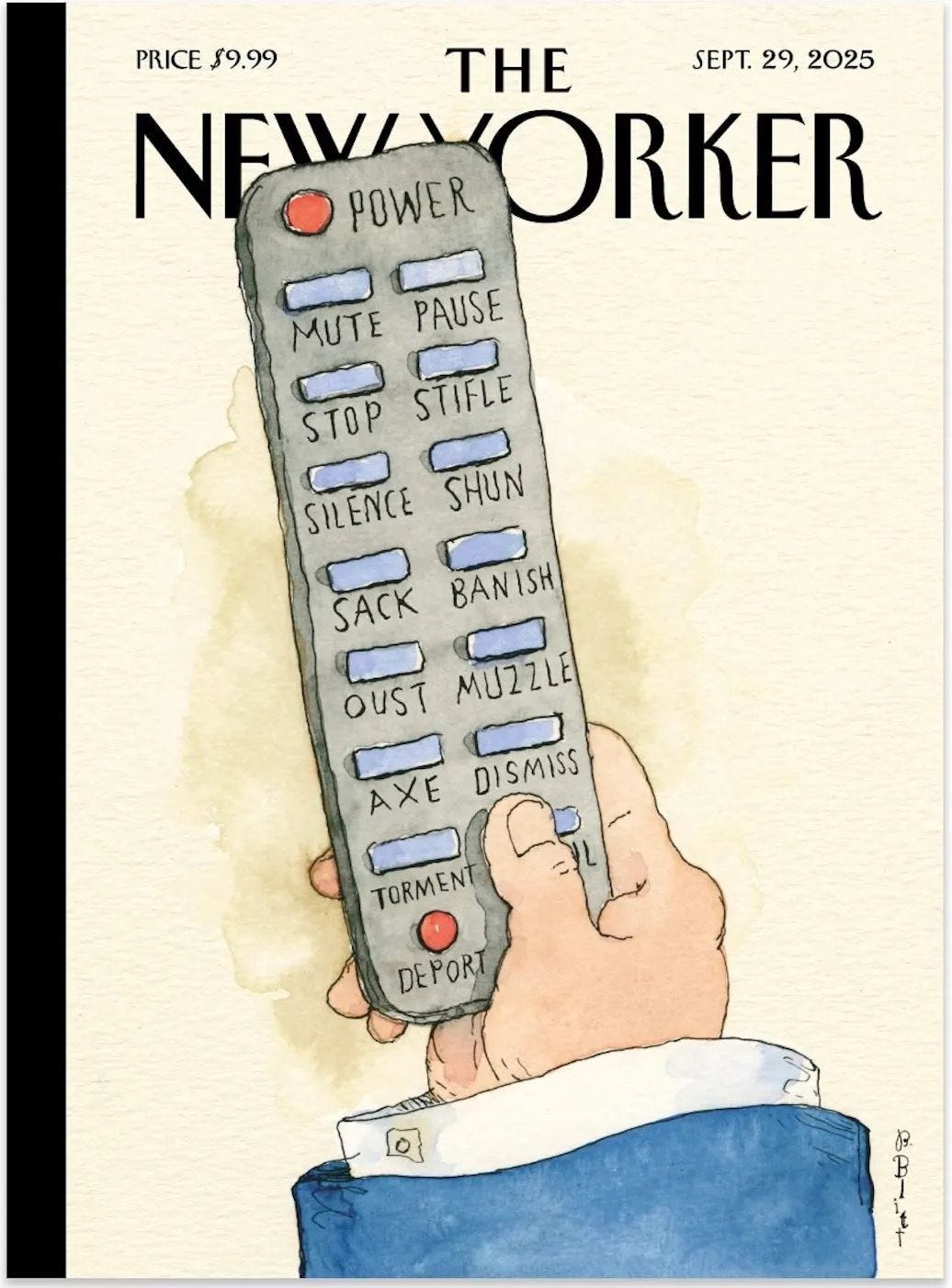
Blitt’s “Remote Control” dares to shout what most journalism won’t: after Kirk’s assassination, the crackdown didn’t stop at newsrooms—it came for entertainment too. Kimmel gets the hook. Newsrooms capitulate. The remote becomes the perfect metaphor for consolidated control—click, and voices disappear; click, and dissent gets silenced across every channel.
The drawing succeeds where journalism fails because it operates in a more transitory space. While media companies fold and comedians get silenced, most satire slips through the cracks, saying what everyone knows but no one left on television can afford to broadcast.
IV. The Crisis of Seeing
Each image in this collection calls out a breakdown in perception—observation without comprehension, coverage without context. That breakdown reaches its endpoint in tourists at the Grand Canyon, phones raised, framing catastrophe as backdrop.
The Grand Climate Disconnect
Watch our latest Chatting the Pictures video:
Chatting the Pictures is a podcast for pictures. In these 3-4 minute videos, we closely examine essential news photos complemented by related imagery. The videos feature writer and photo historian Cara Finnegan and psychologist and Reading the Pictures publisher Michael Shaw. Liliana Michelena produces CTP. You can see the archive on our legacy website and recent examples on our Instagram feed.Joe Rondone captured visitors at Mather Point witnessing massive smoke plumes from the Dragon Bravo Fire—a rare “megafire” consuming over 143,000 acres. Tourists stand calmly, framing catastrophe as spectacle. Phones up, selfie-ready, aimed at evidence of planetary collapse. They’re watching, but are they comprehending?
This is the same visual failure running through every image here—the truth playing catch-up to the punishment, the misdirection, the business-as-usual. In that condition, images become the most urgent form of testimony we have—documenting not just events, but the collapse of perception itself.
After Kirk, that gap widened into a chasm. What’s left are these fragments: a tattoo, a sandwich, a barrier, tourists watching the world burn. Each one insists: pay attention, notice what they’re hiding, refuse the official story. Because once we stop paying attention—once we accept the official frame, the selective spotlight, the fenced walls and erased comedians—that’s when the silence becomes permanent.
Thank you for visiting Reading the Pictures. Despite our visually saturated culture, we remain one of the few sources for analyzing news photography and media images. This post is public, so feel free to share it.
To receive new posts and support our work, consider becoming a free or paid subscriber. As a non-profit organization, your subscription is tax-deductible.



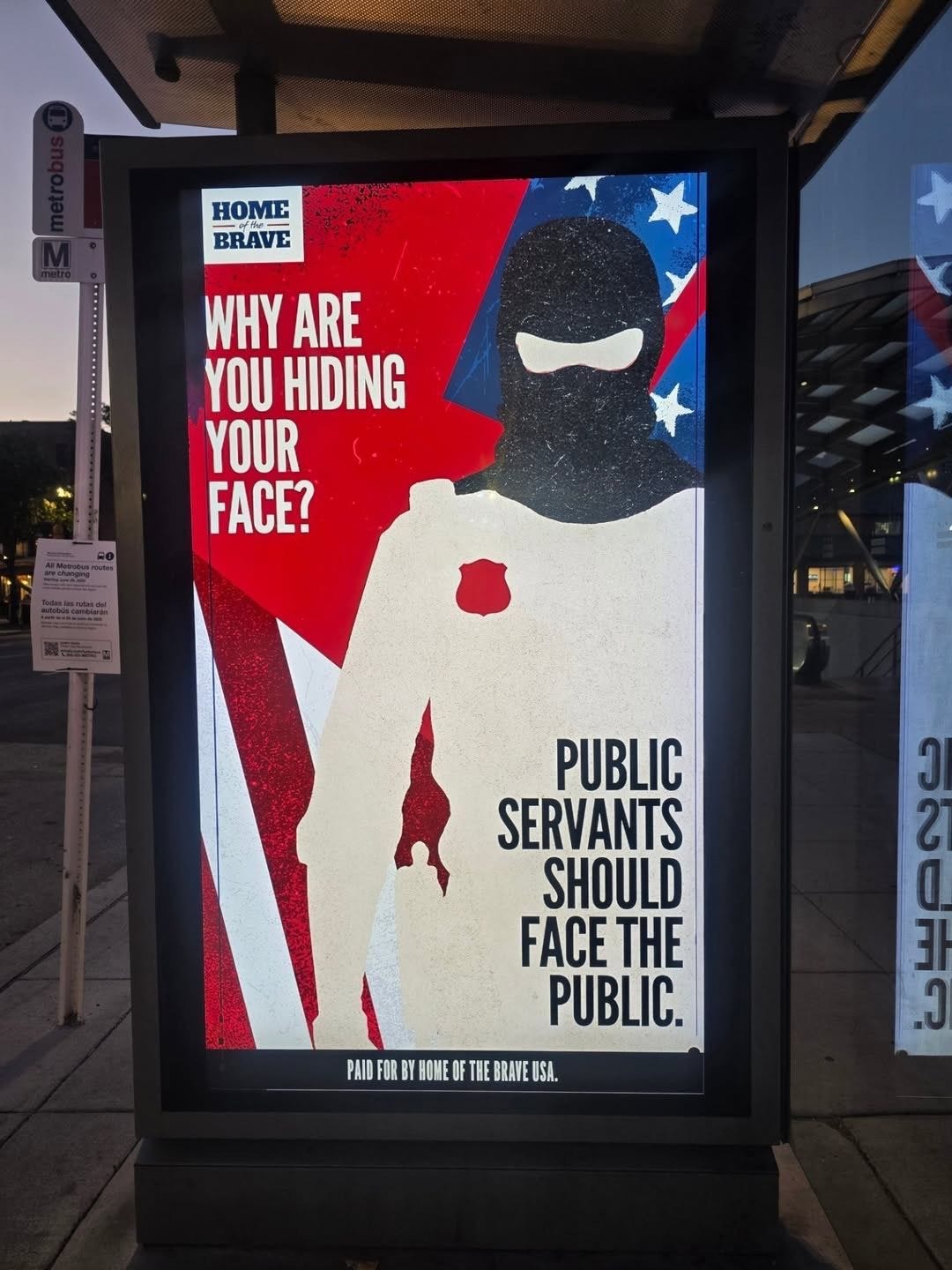
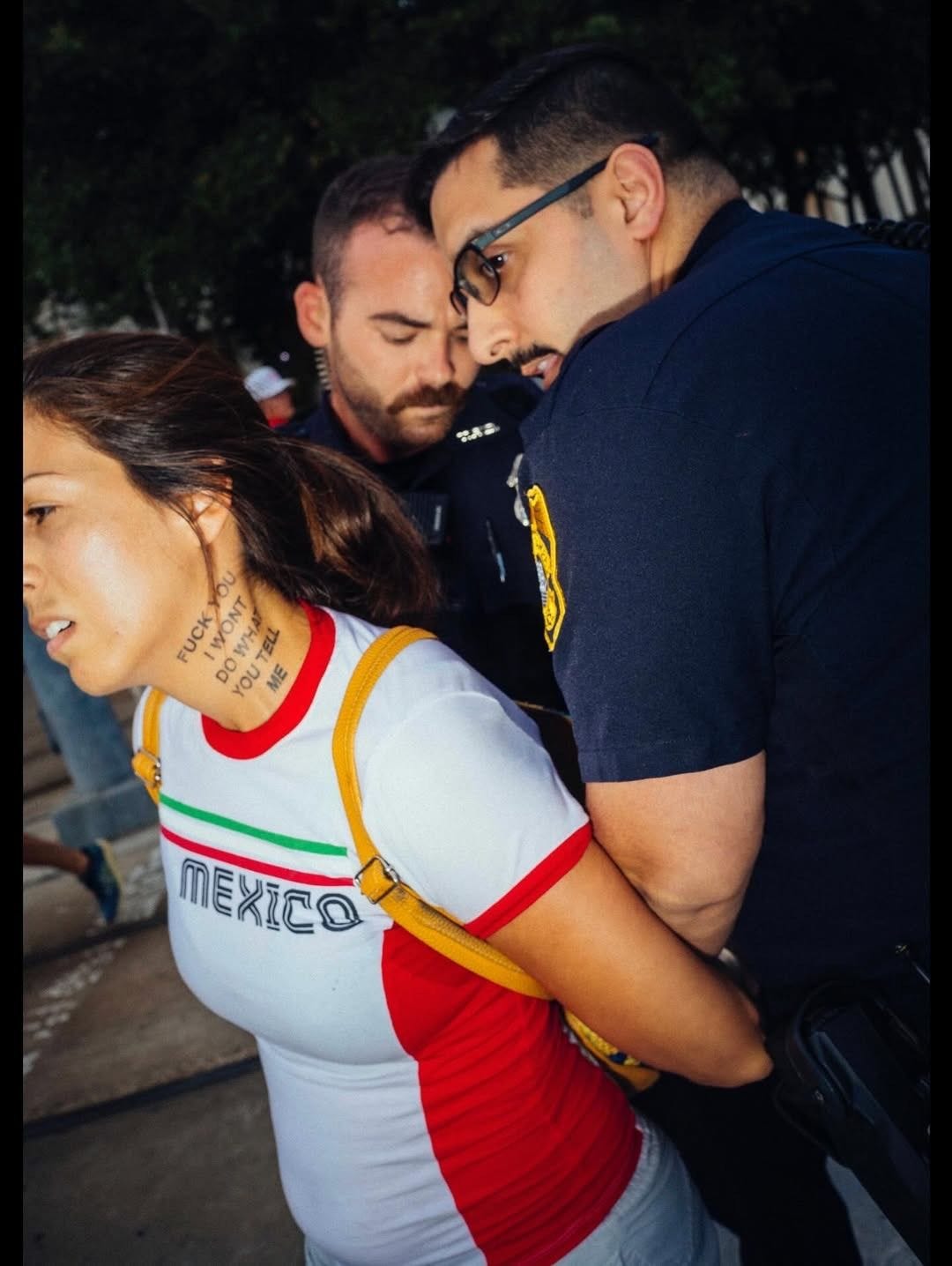
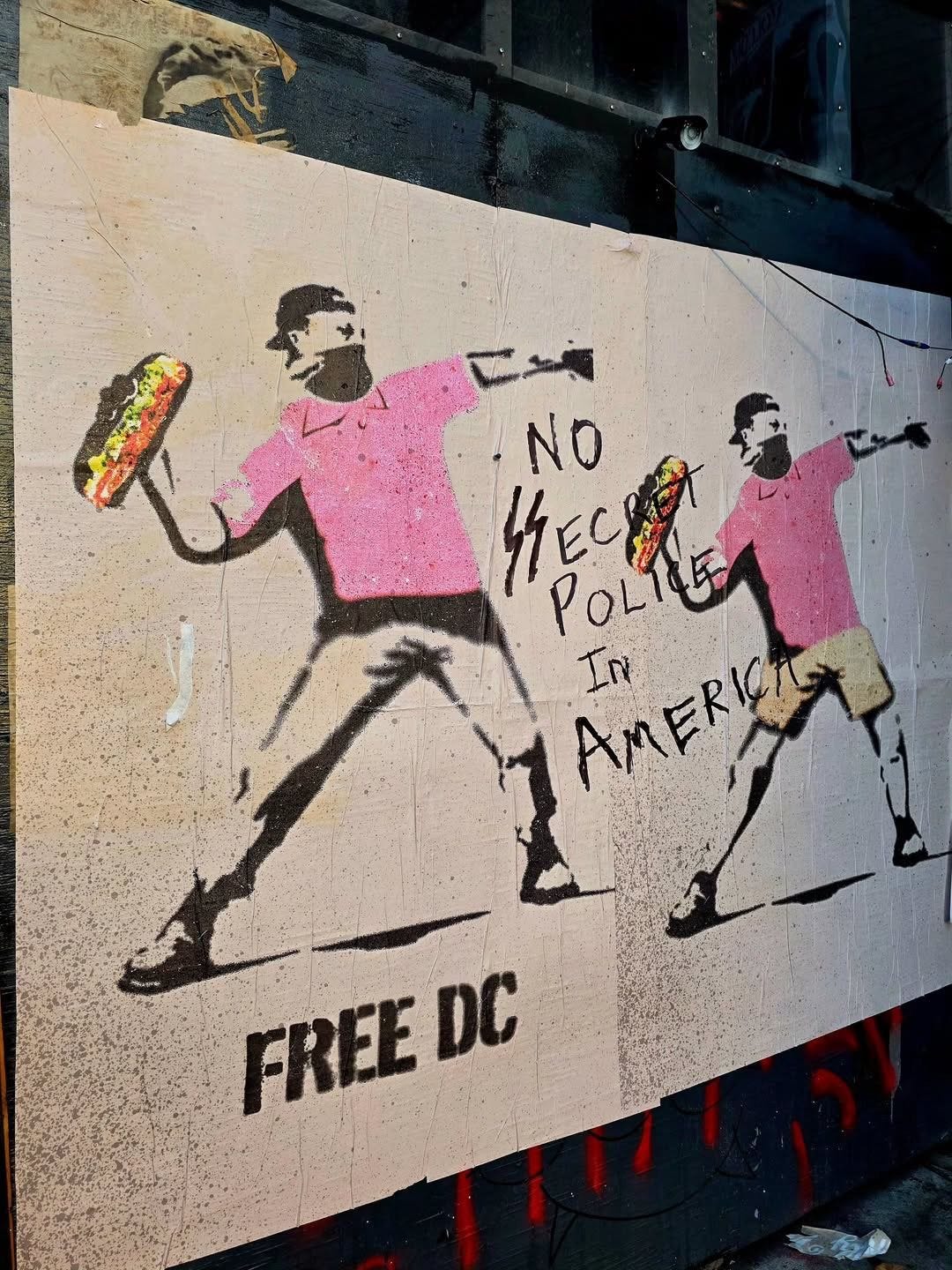
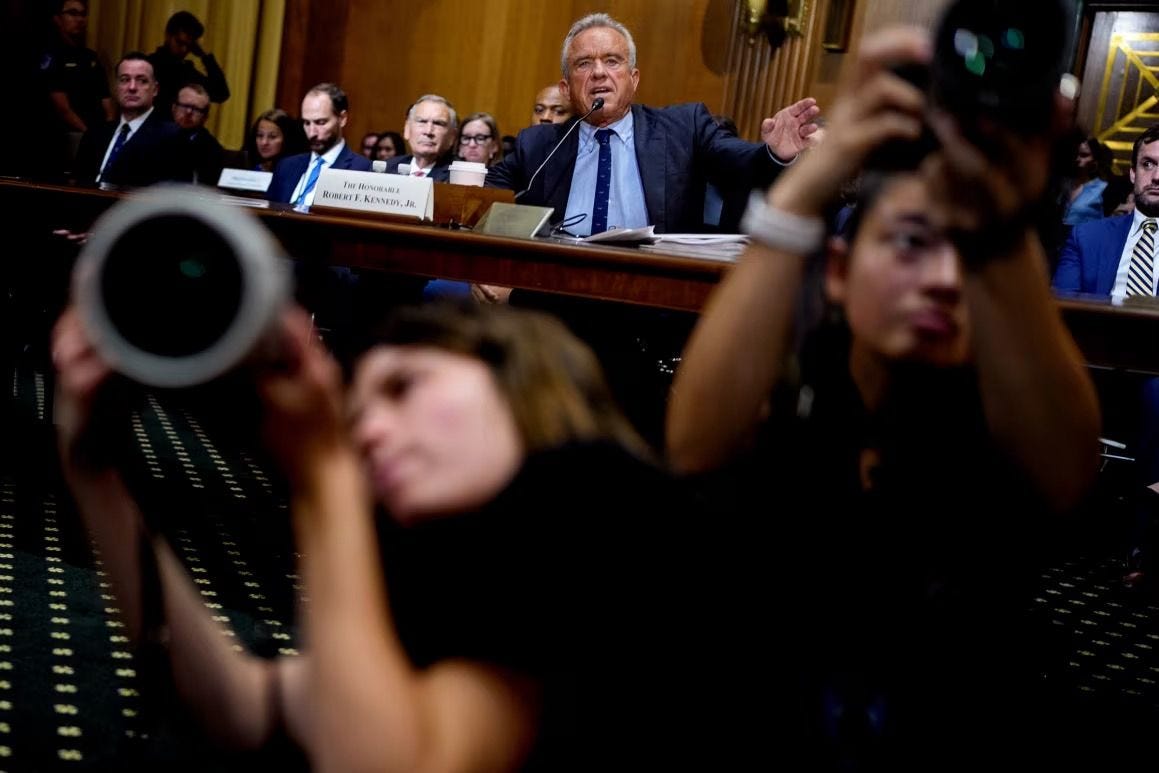
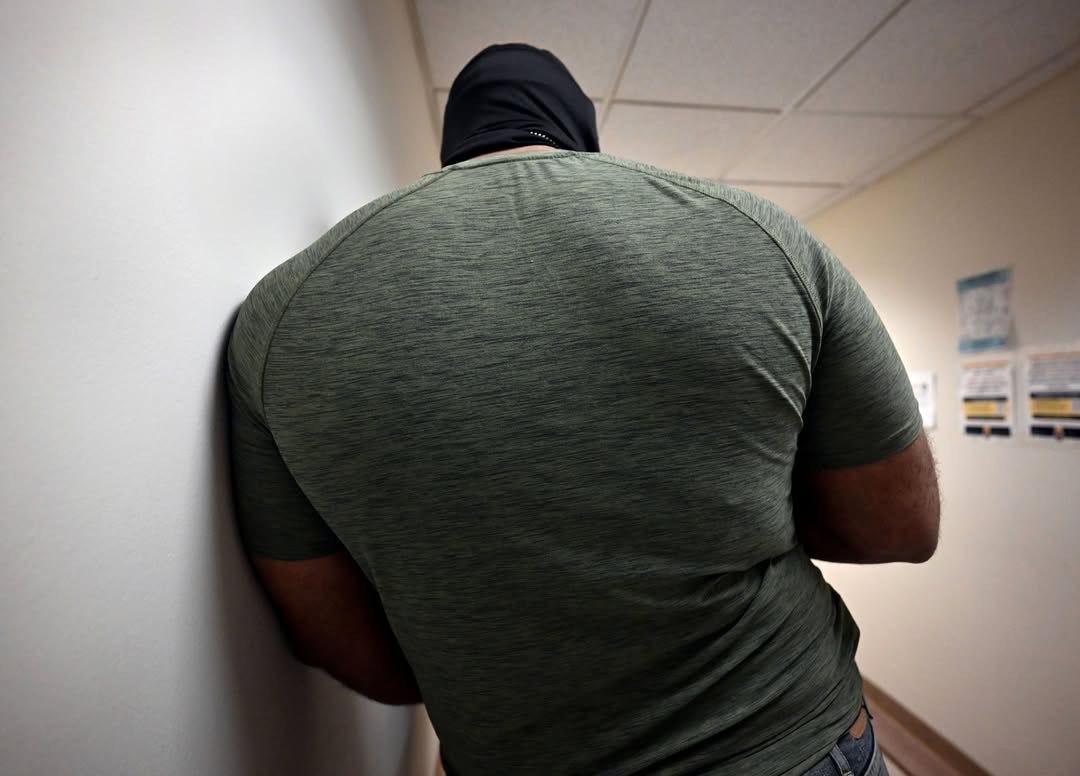
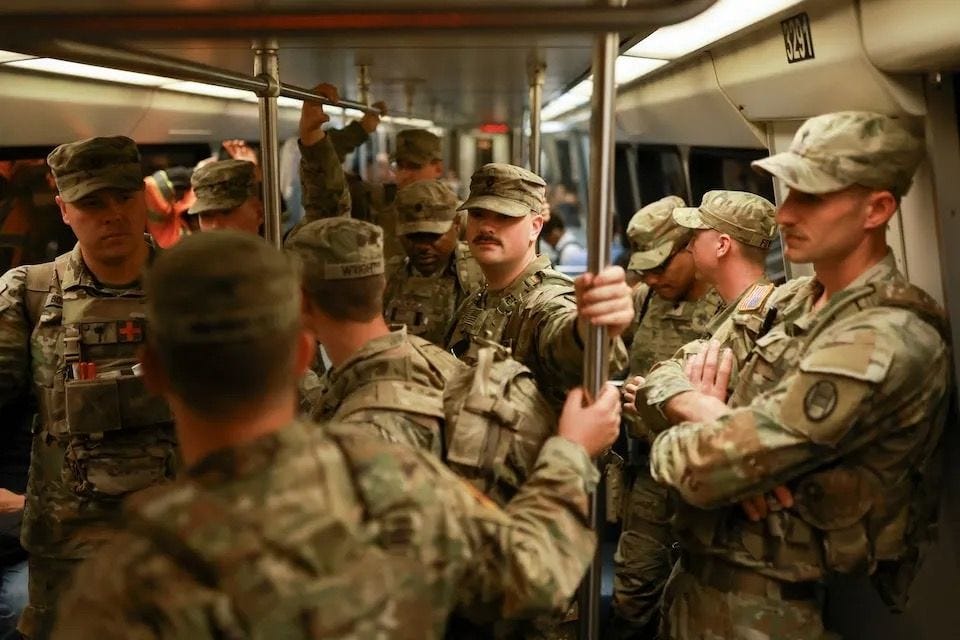
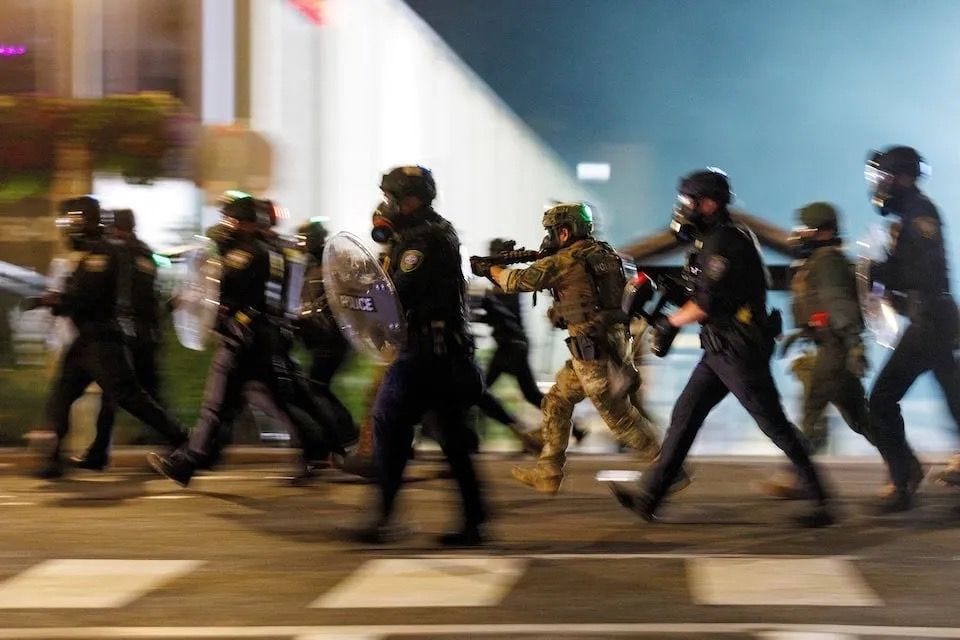
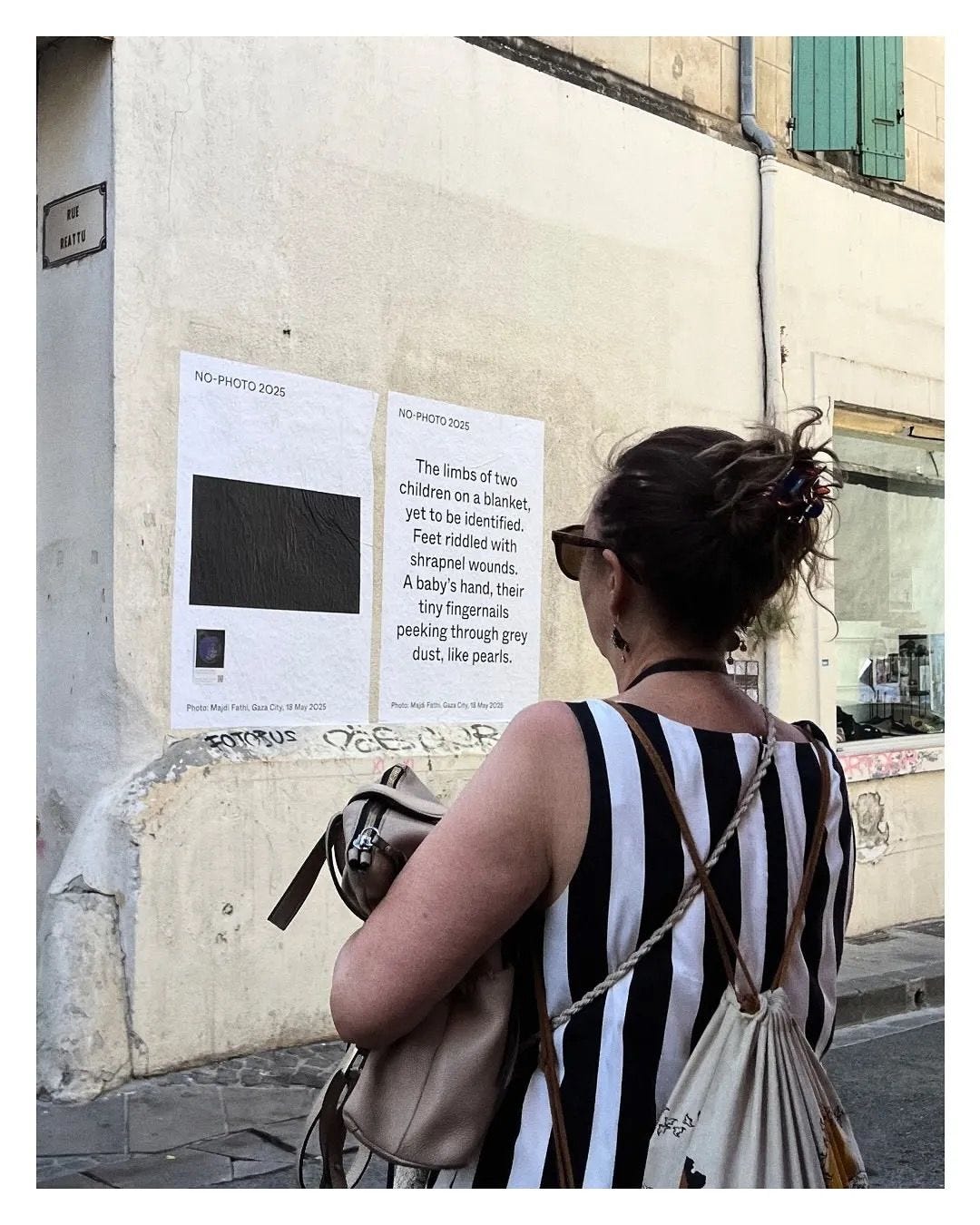
Loved it and restacked!